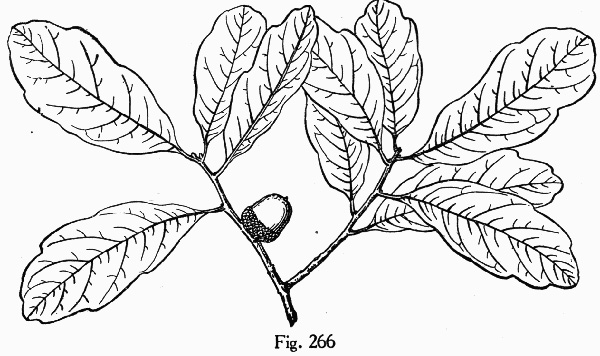Spermatophytes (seed plants): Angiosperms (flowering plants): Eudicots: Core Eudicots: Rosids: Fabids: Fagales
Genus: Quercus
Subgenus: Quercus
Section: Quercus (white oaks)
WEAKLEY'S FLORA OF THE SOUTHEASTERN US (4/24/22):
Quercus chapmanii
FAMILY
Fagaceae
Go to FSUS key
Dig deeper at SERNEC, a consortium of southeastern herbaria.
Read Edible Wild Plants: Oak from Lytton Musselman and the Southern Appalachian Botanical Society.
SYNONYMOUS WITH
PLANTS NATIONAL DATABASE:
Quercus chapmanii
FAMILY
Fagaceae
SYNONYMOUS WITH Flora of North America
Quercus chapmanii
SYNONYMOUS WITH VASCULAR FLORA OF THE CAROLINAS (Radford, Ahles, & Bell, 1968) 055-03-014:
Quercus chapmanii FAMILY Fagaceae
SYNONYMOUS WITH Manual of the Southeastern Flora (Small, 1933, 1938)
Quercus chapmanii
COMMON NAME:
Chapman Oak
To see larger pictures, click or hover over the thumbnails.
WEAKLEY'S FLORA OF THE SOUTHEASTERN US (4/24/22):
Quercus chapmanii
FAMILY
Fagaceae
SYNONYMOUS WITH
PLANTS NATIONAL DATABASE:
Quercus chapmanii
FAMILY
Fagaceae
SYNONYMOUS WITH
Flora of North America
Quercus chapmanii
SYNONYMOUS WITH
VASCULAR FLORA OF THE CAROLINAS (Radford, Ahles, & Bell, 1968) 055-03-014:
Quercus chapmanii
FAMILY
Fagaceae
SYNONYMOUS WITH
Manual of the Southeastern Flora (Small, 1933, 1938)
Quercus chapmanii
If a search such as "Carex leptalea var. leptalea" doesn't deliver the results you want, try "Carex leptalea".
Or, to minimize chances of a misspelling, try just "Carex le".
Less is more: If "pencil flower" doesn't deliver the results you want, try "pencil".


